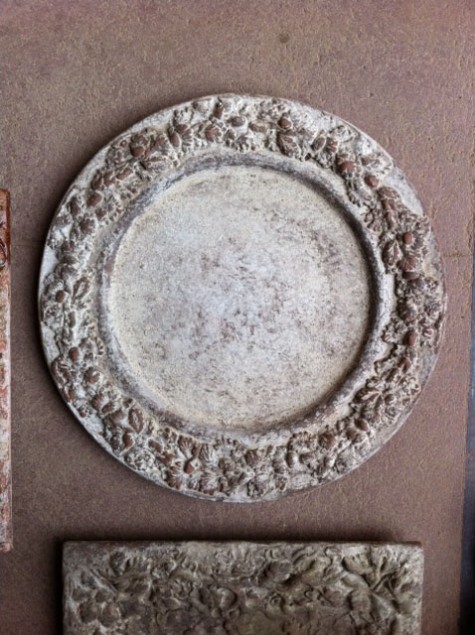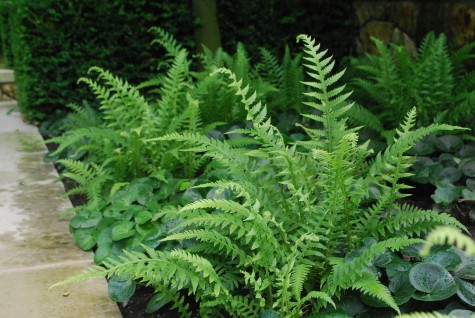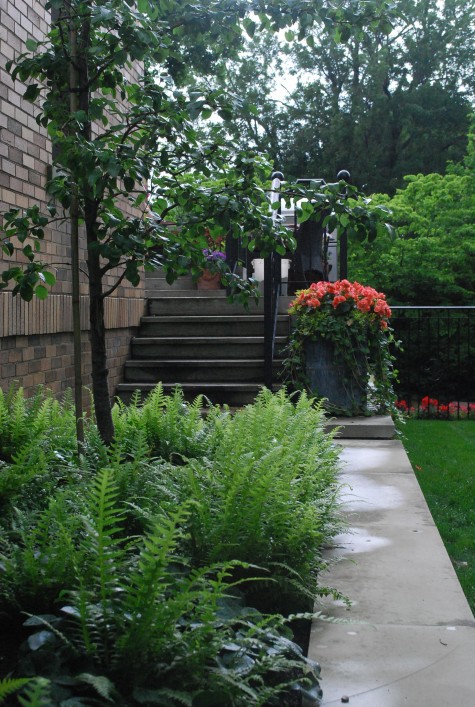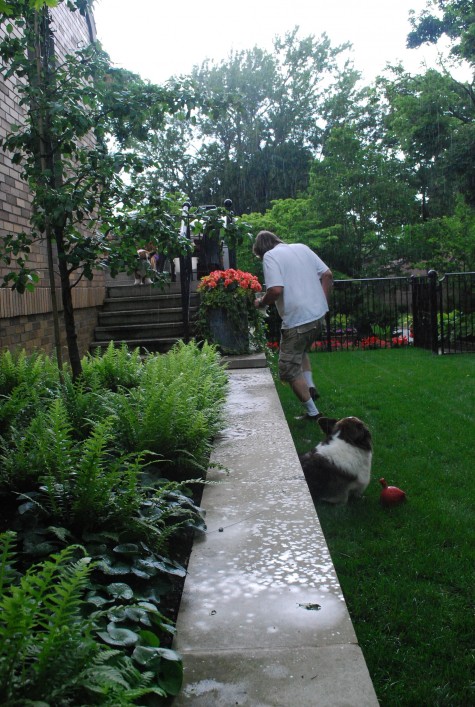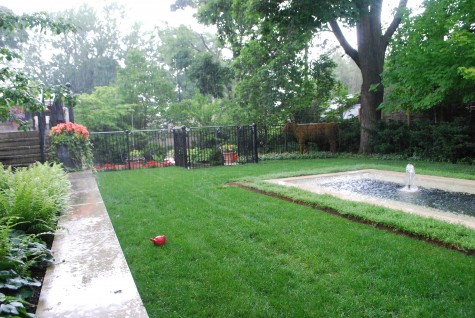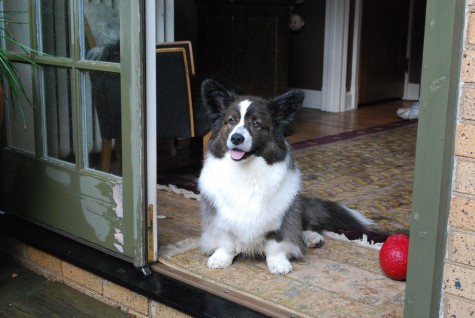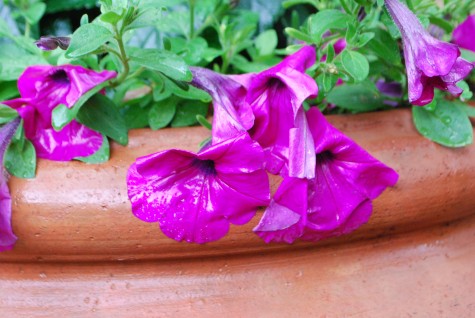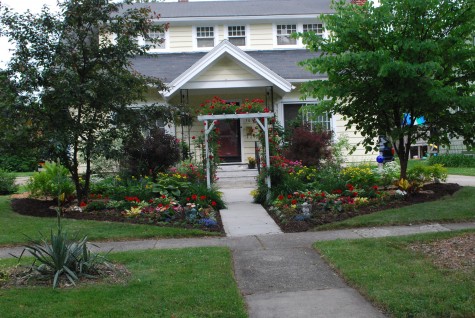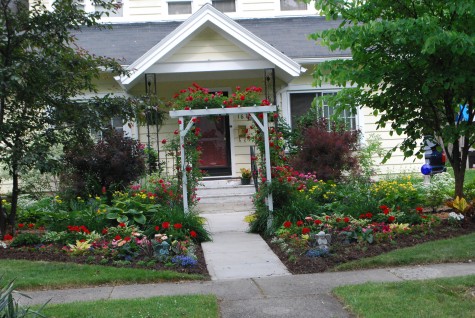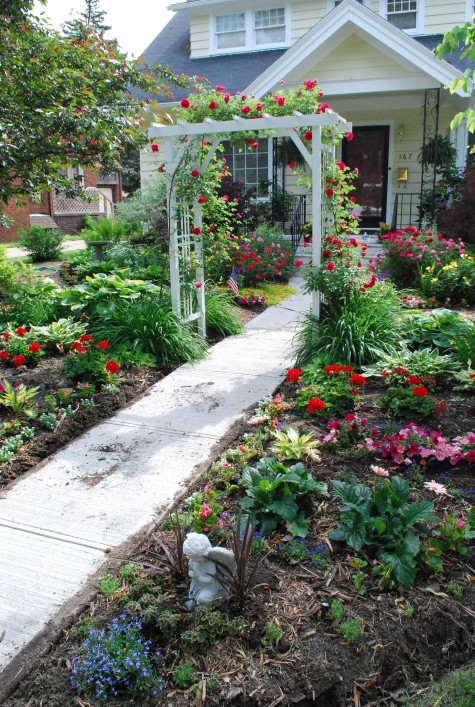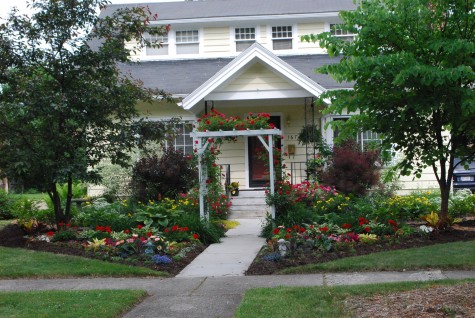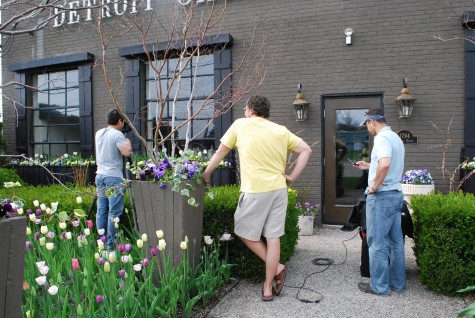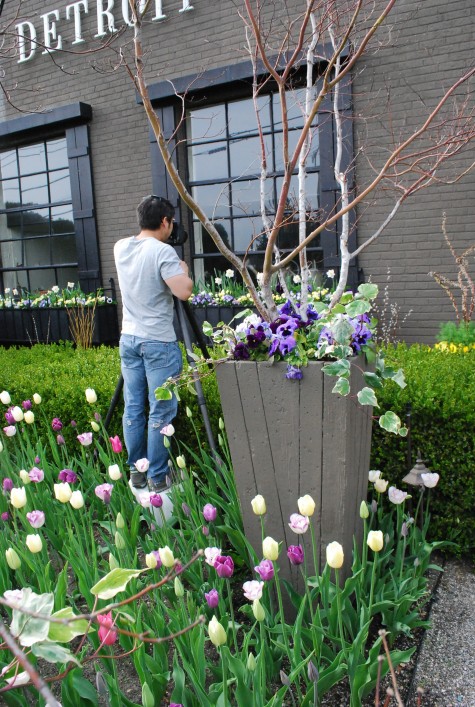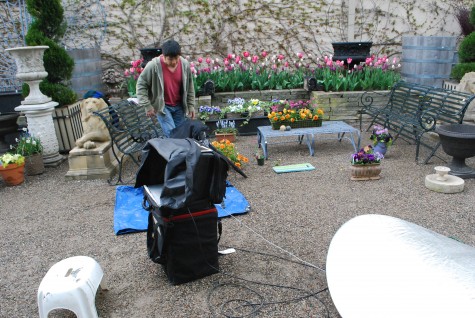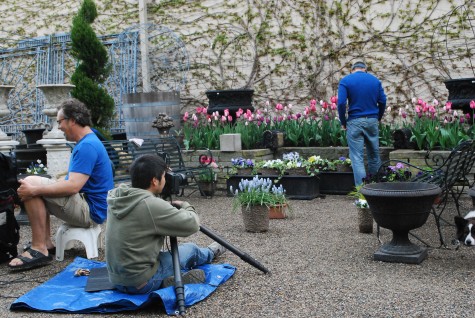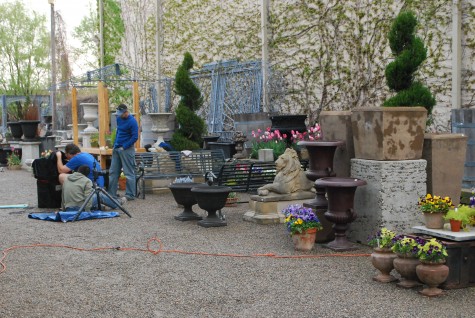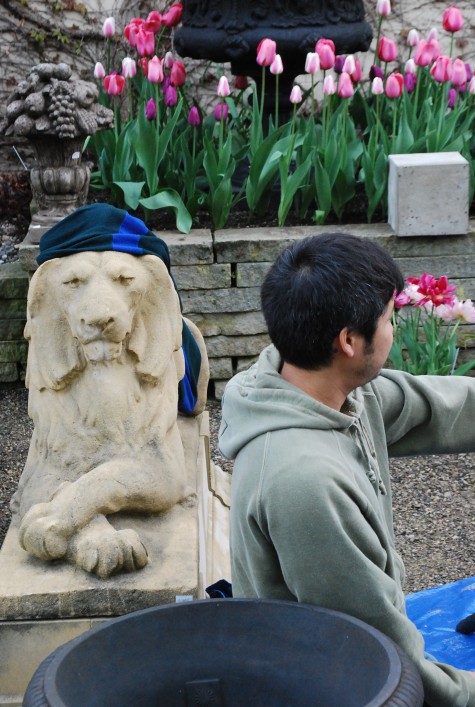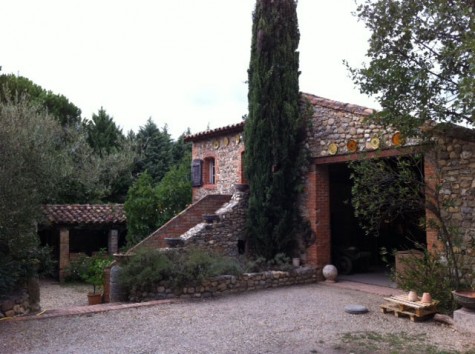 Rural France is home to many artists who make garden pots. Each one has their own style and finishes, most of which are based on designs and shapes dating back to the 18th century. Detroit Garden Works will have a substantial and wide ranging collection of French terra cotta come spring. This has everything to do with Rob’s willingness to travel. It is not possible to shop these pots from a catalogue, a website, or over the phone. You have to go. To see them in person. Anything you see in the shop Rob has seen in person.
Rural France is home to many artists who make garden pots. Each one has their own style and finishes, most of which are based on designs and shapes dating back to the 18th century. Detroit Garden Works will have a substantial and wide ranging collection of French terra cotta come spring. This has everything to do with Rob’s willingness to travel. It is not possible to shop these pots from a catalogue, a website, or over the phone. You have to go. To see them in person. Anything you see in the shop Rob has seen in person.
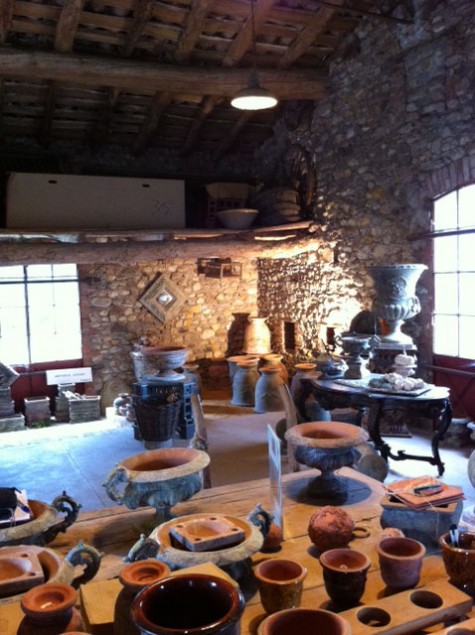 This modest showroom gives an overview of this artist’s point of view. Much of what Rob bought here has to be custom made. This style, in this finish, or this color. That style in this size. How he shops is much more rigorous than what this picture would suggest. When a 40 foot container of terra cotta from France arrives, it will be an edited collection, with a point of view. There will be multiples, with careful consideration to size. There will be a small representation from certain potteries whose output is limited.
This modest showroom gives an overview of this artist’s point of view. Much of what Rob bought here has to be custom made. This style, in this finish, or this color. That style in this size. How he shops is much more rigorous than what this picture would suggest. When a 40 foot container of terra cotta from France arrives, it will be an edited collection, with a point of view. There will be multiples, with careful consideration to size. There will be a small representation from certain potteries whose output is limited.
 This particular pottery features very unusual finishes on their terra cotta. Rob hears that no outsiders are ever permitted in the studio. This particular poterie is represented by a broker Rob met in Paris a few years ago. She arranged for a visit and consulted with him on his order. She will be supervising the manufacture, will inspect all of the pots prior to shipment, and will arrange for pots to be readied shipment. Multiple orders will need to be consolidated, and packed into a container dropped at the poterie with the most substantial order. The most important issue-the finishes. She will look every pot over.
This particular pottery features very unusual finishes on their terra cotta. Rob hears that no outsiders are ever permitted in the studio. This particular poterie is represented by a broker Rob met in Paris a few years ago. She arranged for a visit and consulted with him on his order. She will be supervising the manufacture, will inspect all of the pots prior to shipment, and will arrange for pots to be readied shipment. Multiple orders will need to be consolidated, and packed into a container dropped at the poterie with the most substantial order. The most important issue-the finishes. She will look every pot over.
 Many of the poteries have an interpretive finish they call a patine ancienne. There are many very old French terra cotta pots still in use; the climate is mild, and pots can be left outdoors all winter. Old glazed French pots are characterized by how much of the glaze has been shed from exposure to weather. The old pots are priced at a premium. I have but a few truly antique French terra cotta pots. Interpretive finishes-some are great, some are overwrought.
Many of the poteries have an interpretive finish they call a patine ancienne. There are many very old French terra cotta pots still in use; the climate is mild, and pots can be left outdoors all winter. Old glazed French pots are characterized by how much of the glaze has been shed from exposure to weather. The old pots are priced at a premium. I have but a few truly antique French terra cotta pots. Interpretive finishes-some are great, some are overwrought.
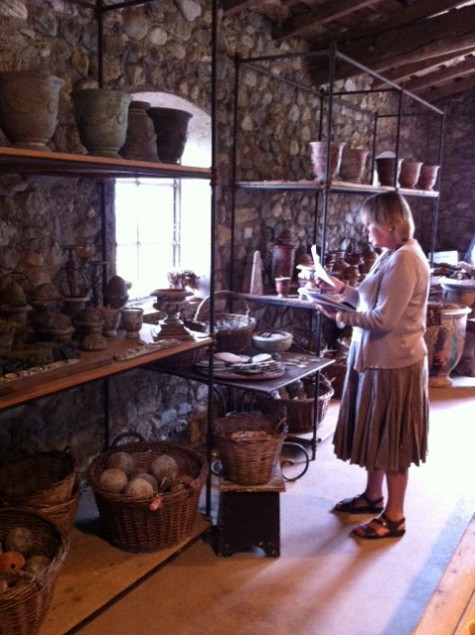 Rob tells me that he has an interest in the patine ancienne. Patina refers to a surface condition which has acquired a certain look or color or texture from age. Antique stone urns from England may have large colonies of lichens and mosses that verify their age. Though he has an interest in aged surfaces, he prefers some contemporary interpretations over others.
Rob tells me that he has an interest in the patine ancienne. Patina refers to a surface condition which has acquired a certain look or color or texture from age. Antique stone urns from England may have large colonies of lichens and mosses that verify their age. Though he has an interest in aged surfaces, he prefers some contemporary interpretations over others.
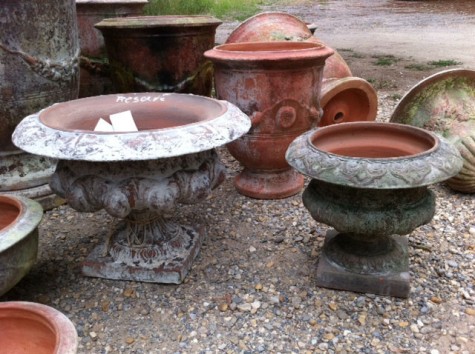 This particular poterie features finishes that he likes. They have a feeling of age which is subtle. Not too hard hitting. When I first saw these pots in his pictures, I was sure I was looking at vintage pots.
This particular poterie features finishes that he likes. They have a feeling of age which is subtle. Not too hard hitting. When I first saw these pots in his pictures, I was sure I was looking at vintage pots.
 We have bought many containers of pots from the Poterie Madeleine over the years; we have sold all but a very few. Their high gloss glazes in jaune, (yellow), vert (green), flamme (green and brown flames), and blu lavande (this is a hard color to describe-it is blue and lavender mixed) were beautiful. They were the classic vase Anduze I always associate with French terra cotta. The ownership of the poterie has changed since we first shopped there; the pots are different-the business is different. Madame Pellier is no longer there. I have many good memories of dealing with her over an order. The new pots-they are too hurriedly made, says Rob. He tells me we need to move on-so be it. The classic vase Anduze pot pictured above-the surface is beautifully different than anything we have ever had before.
We have bought many containers of pots from the Poterie Madeleine over the years; we have sold all but a very few. Their high gloss glazes in jaune, (yellow), vert (green), flamme (green and brown flames), and blu lavande (this is a hard color to describe-it is blue and lavender mixed) were beautiful. They were the classic vase Anduze I always associate with French terra cotta. The ownership of the poterie has changed since we first shopped there; the pots are different-the business is different. Madame Pellier is no longer there. I have many good memories of dealing with her over an order. The new pots-they are too hurriedly made, says Rob. He tells me we need to move on-so be it. The classic vase Anduze pot pictured above-the surface is beautifully different than anything we have ever had before.
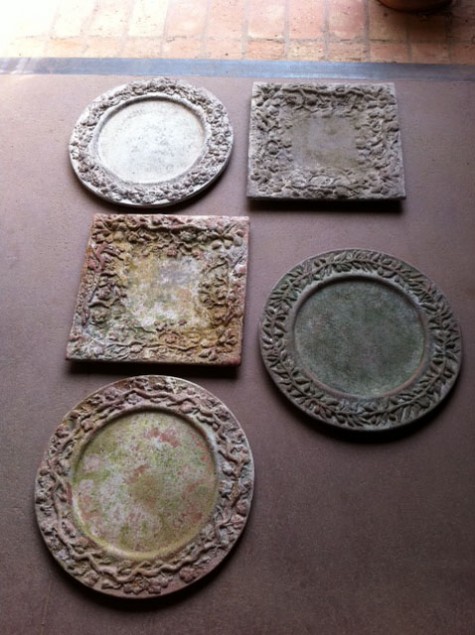 This poterie has captured his interest. The colors and finishes defy description. They are not overwrought. There is ample evidence of the human hand. These trays-he laid them on the floor to study them. The poterie that makes them have studied equally.
This poterie has captured his interest. The colors and finishes defy description. They are not overwrought. There is ample evidence of the human hand. These trays-he laid them on the floor to study them. The poterie that makes them have studied equally.
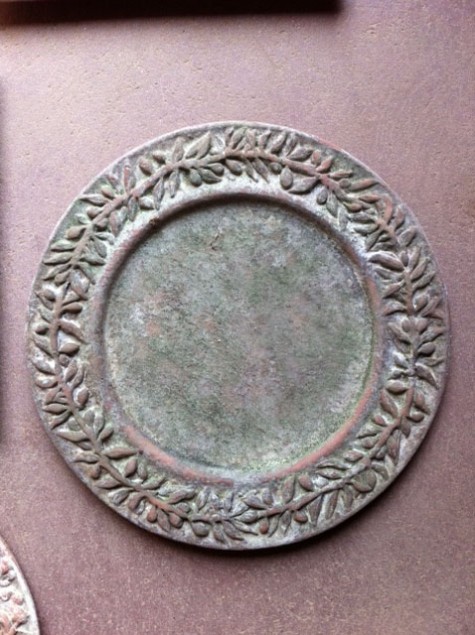 If you are a gardener, you have a relationship with clay pots. The simplest machine made terra cotta pot is a friendly home to a plant. That fired earth breathes. It promotes good root growth. It soaks up water freely; that water can evaporate just as quickly. This tray speaks much more eloquently to the clay earth from which it was made than a machine made pot. The decoration is simple, and strong. I am sure when the time comes that I can pick up this tray in my hands, it will have weight, and heft which is as much physical as it is visual. The finish is subtle and moody.
If you are a gardener, you have a relationship with clay pots. The simplest machine made terra cotta pot is a friendly home to a plant. That fired earth breathes. It promotes good root growth. It soaks up water freely; that water can evaporate just as quickly. This tray speaks much more eloquently to the clay earth from which it was made than a machine made pot. The decoration is simple, and strong. I am sure when the time comes that I can pick up this tray in my hands, it will have weight, and heft which is as much physical as it is visual. The finish is subtle and moody.  I could live with this. I might not be able to live without it.
I could live with this. I might not be able to live without it.
This interpretation of patine anciennne is beautifully rendered. I am sure the work of it is lengthy.  Rob purchased from the poterie’s available objects. He placed a very large special order, which we do not expect to be completed until well into November. Every piece will be well worth the wait. Great garden pots-Rob has made a life’s work of this. What he has brought my way-priceless.
Rob purchased from the poterie’s available objects. He placed a very large special order, which we do not expect to be completed until well into November. Every piece will be well worth the wait. Great garden pots-Rob has made a life’s work of this. What he has brought my way-priceless.
